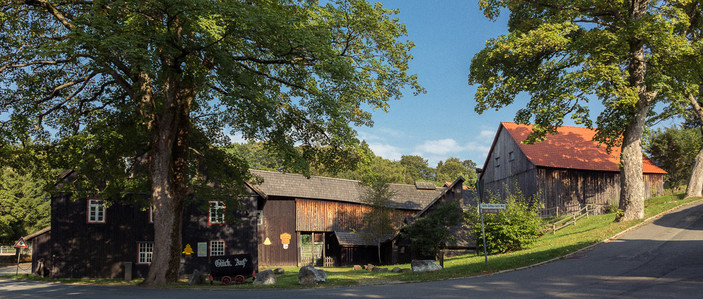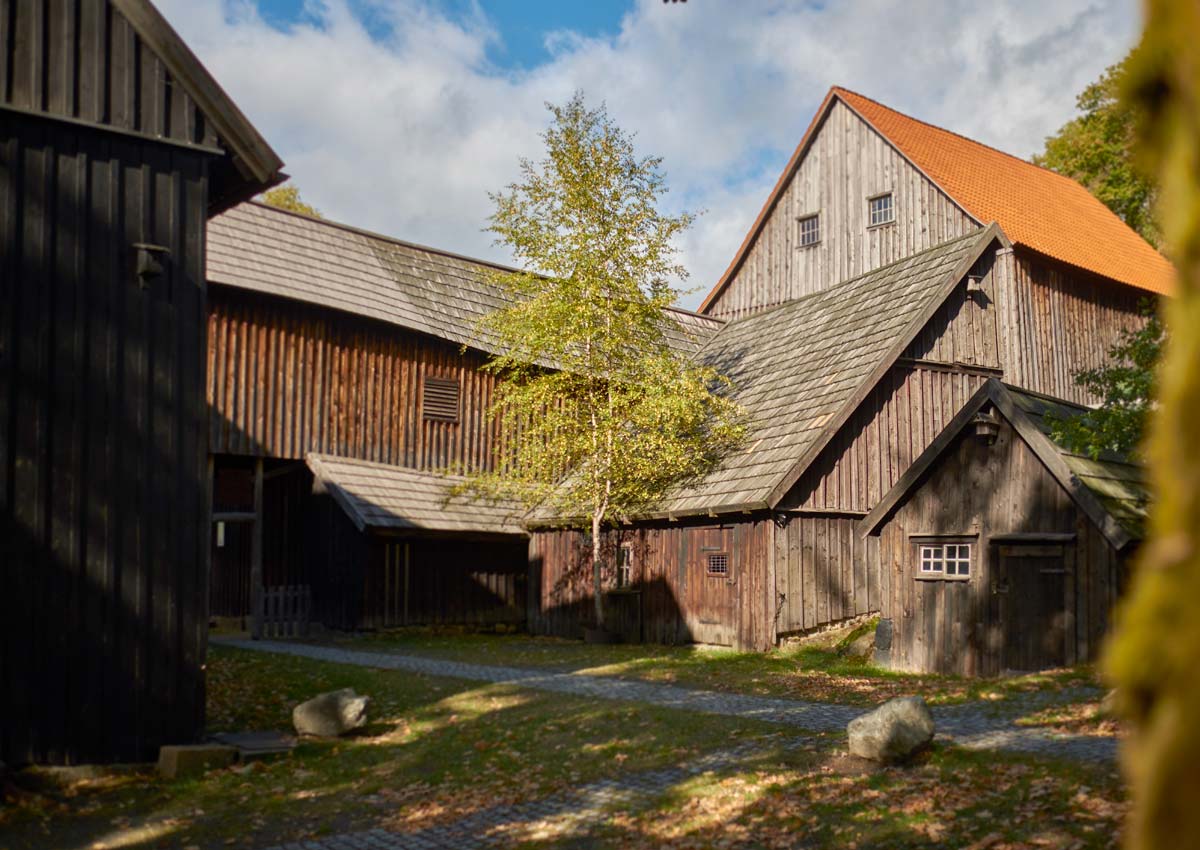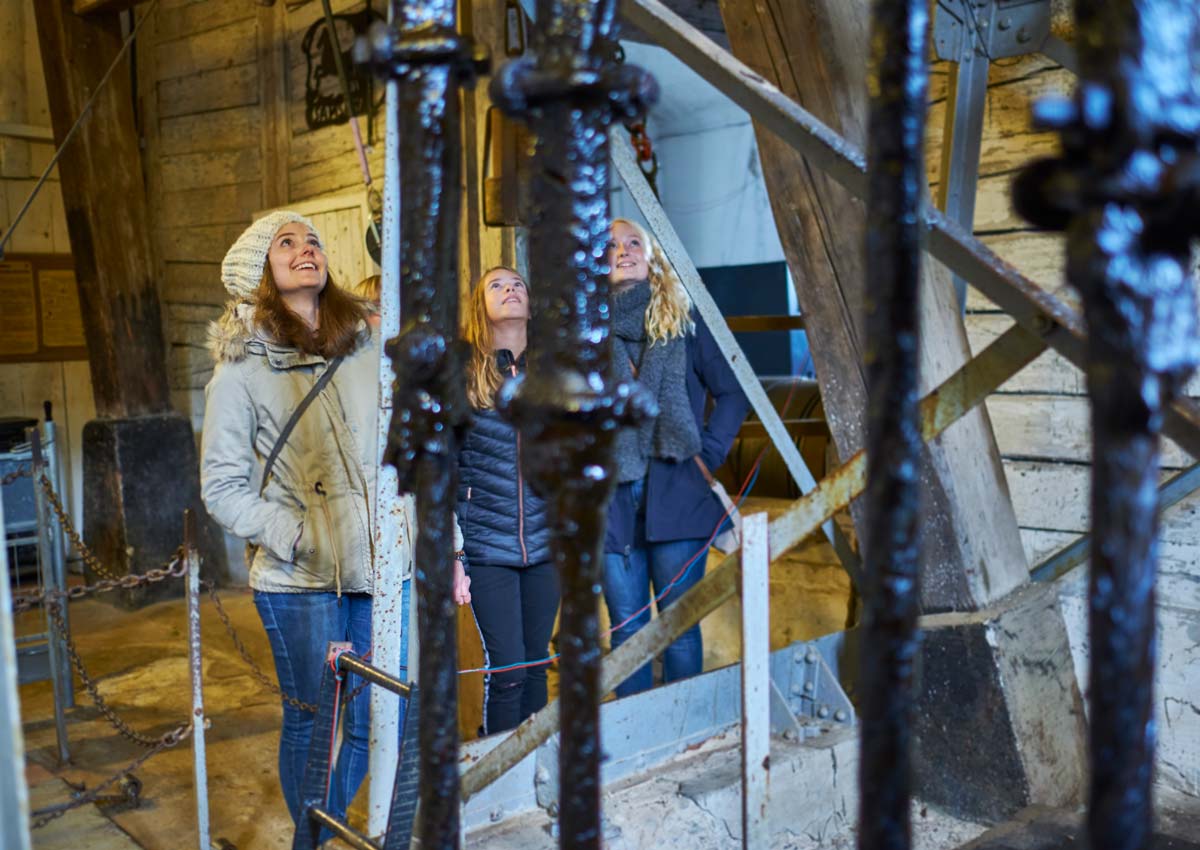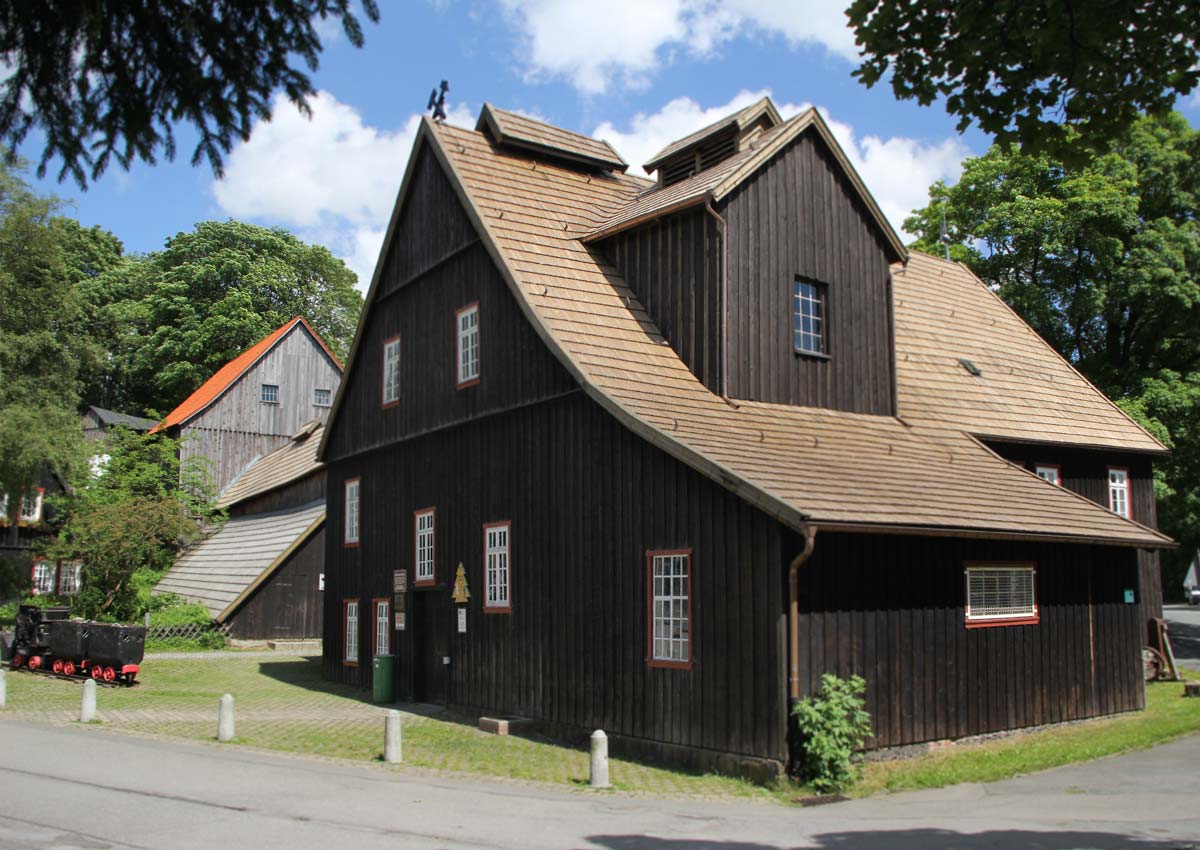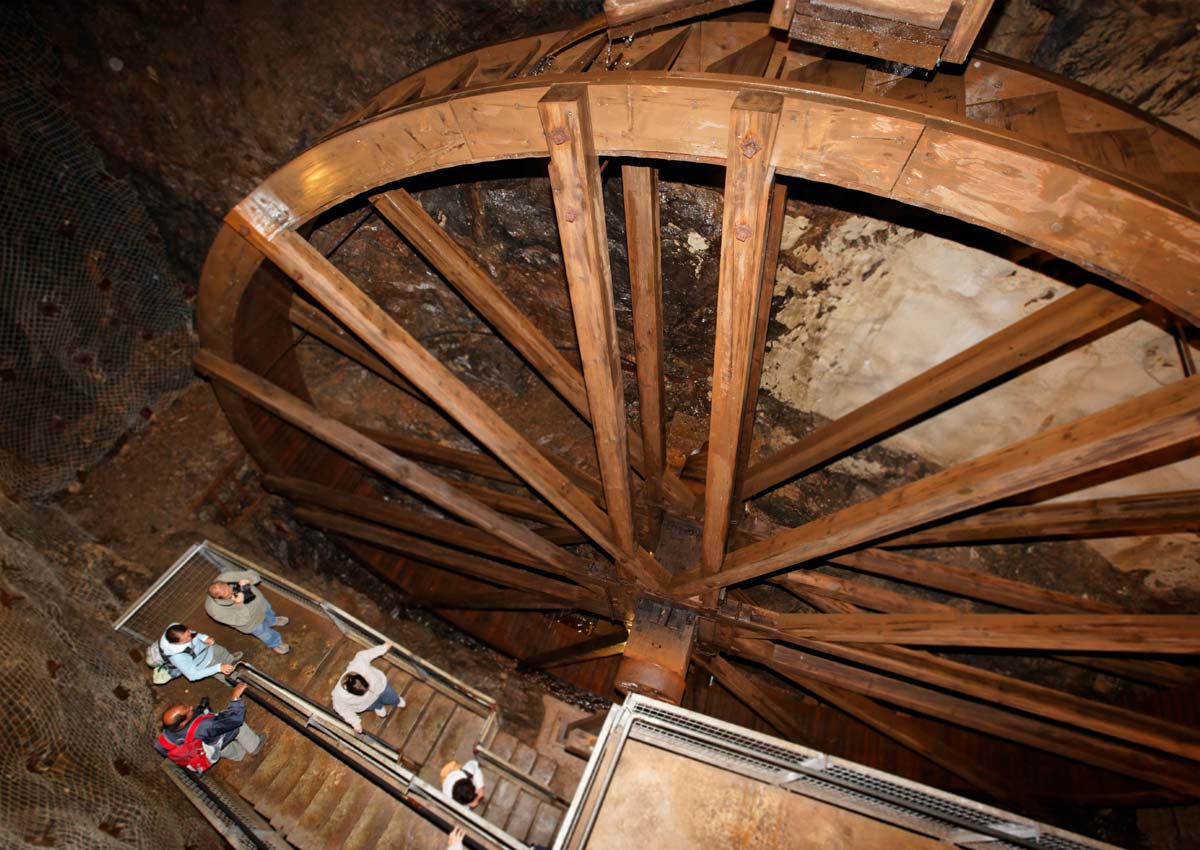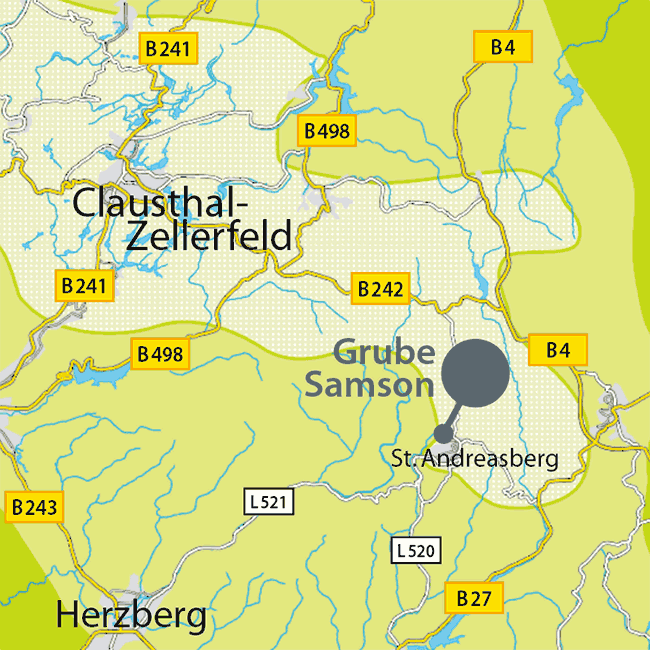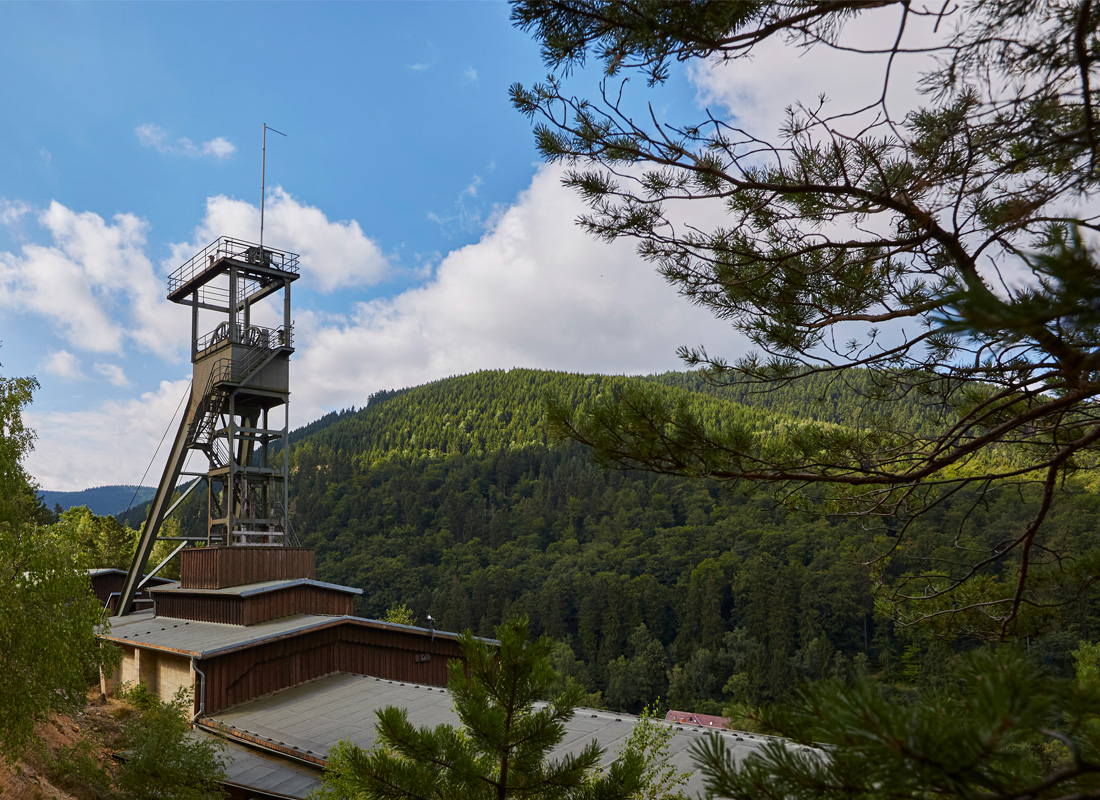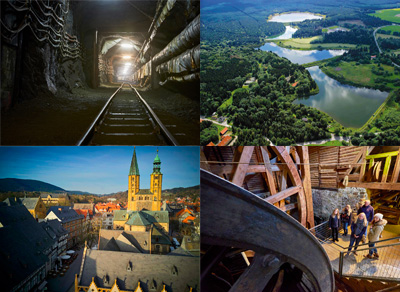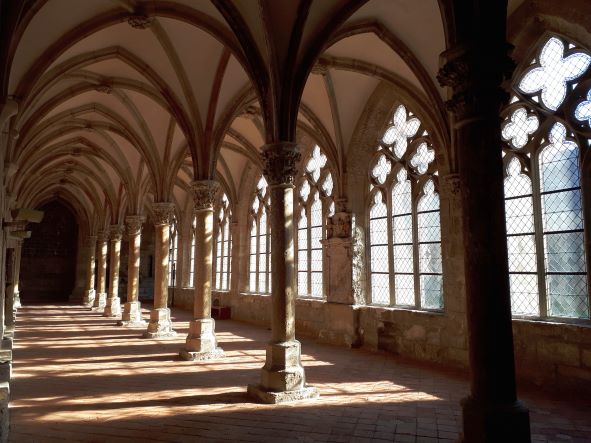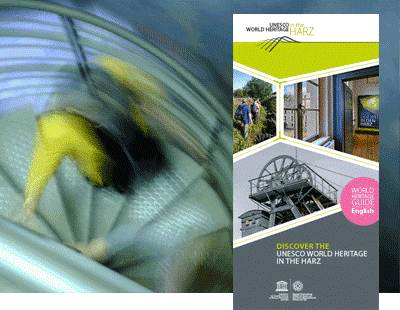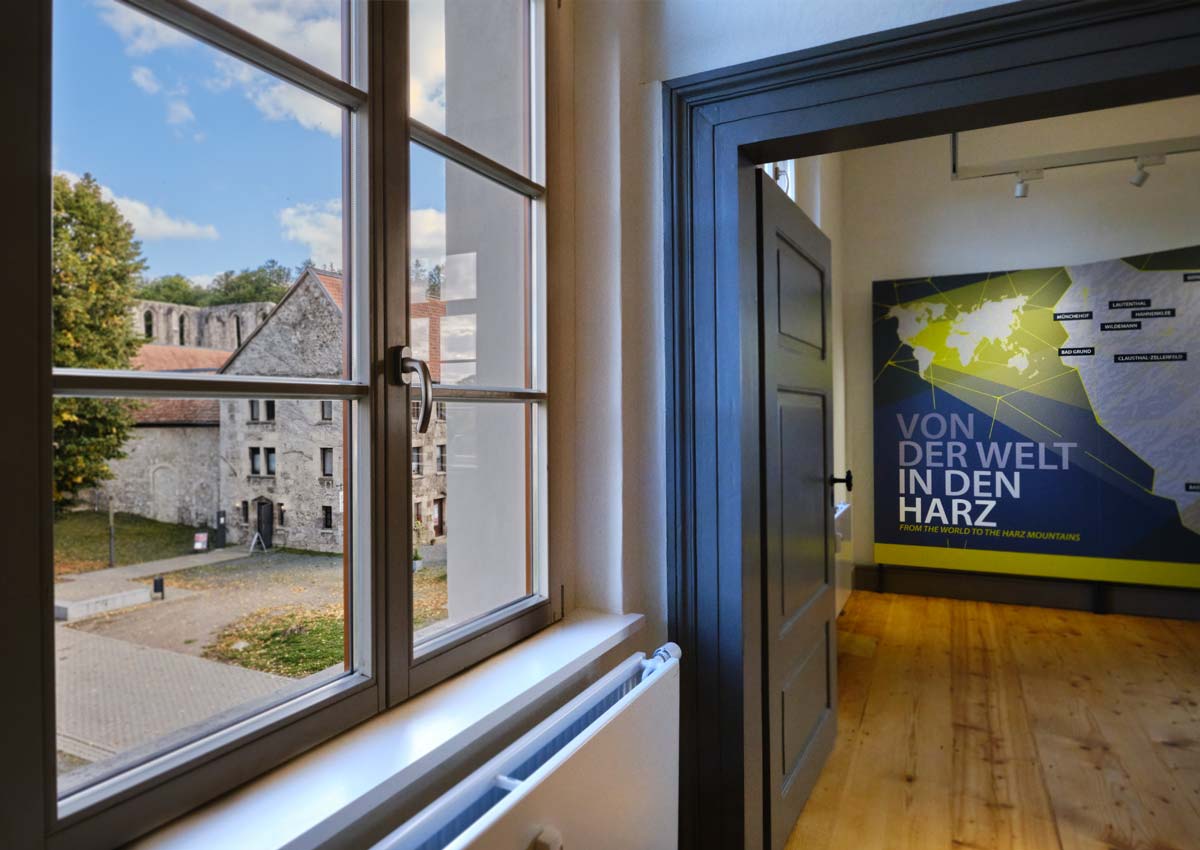Grube Samson Mining Museum –
the deepest mine in the world for many years
By visiting today's ensemble of buildings at the Samson Mine in Sankt Andreasberg you can experience the last completely preserved mine of the historic Upper Harz mining. Here, primarily silver ore was mined from 1521 to 1910. The "Samson" was one of the deepest mines in the world for many years.
The focus of the exhibition is the theme of "energy", which is presented using the example of water power for driving pumps and the famous man engine. This machine, which today is an internationally recognized historic industrial monument, is the only man engine in the world that is still in working order. Last but not least, you will be impressed by the original ninemetre-high, bi-directional waterwheel and the twelve-metre-high, mono-directional water wheel.
As part of the project TRAFO: HARZ|MUSEUMS|WORLD HERITAGE TRANSFORMS A REGION the exhibition areas at Samson Mine have been updated.
Video 1: Overview – Not only the interactive bi-directional waterwheel control and the new presentation of the mineral collection await your visit.
Video 2: Highlight – Experience the man engine simulation!
Video 3: The new art wheel at the Samson mine in St. Andreasberg/Harz. (Gallery of the construction work!)
CONTACT
Grube Samson
Am Samson 2
37444 St. Andreasberg
Tel. -49 5582-1249
info@grube-samson.de
www.grube-samson.de
OPENING TIMES
The mine can only be visited on a guided tour - more information can be found here.
Further tours will be offered according to demand or for pre-booked groups.

